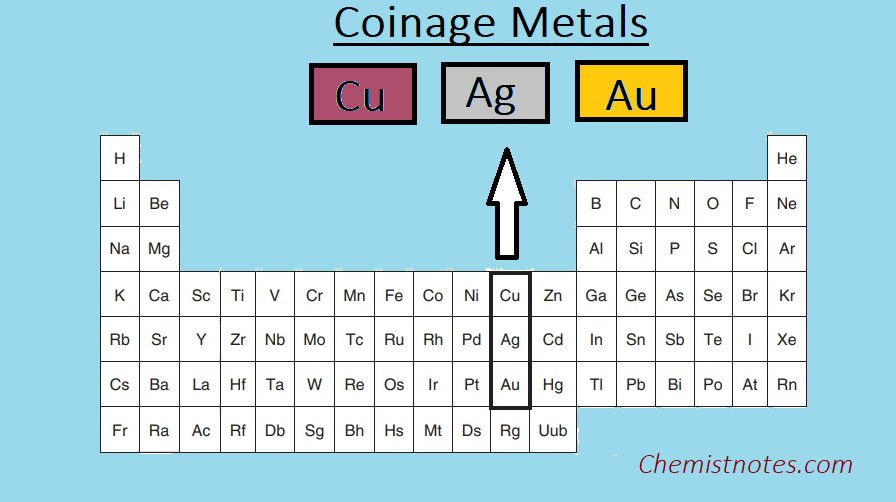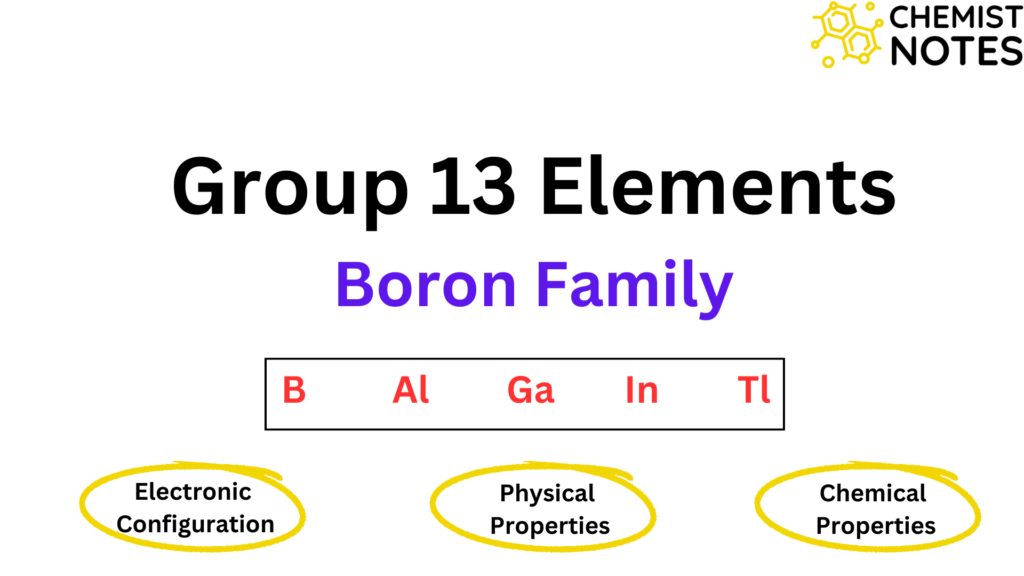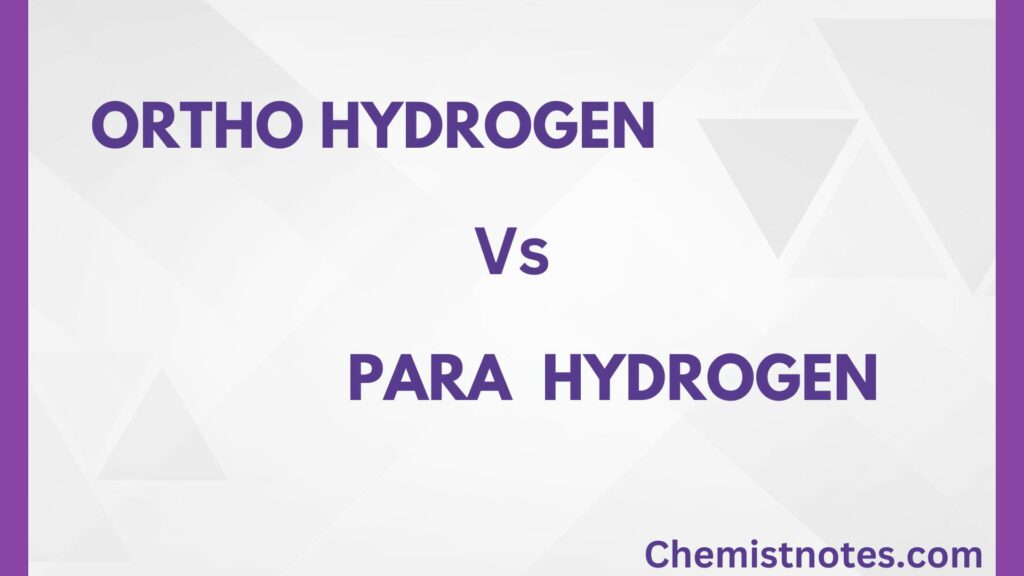Table of Contents
ToggleCoinage metals are the element of group IB (11) of the periodic table that constitutes three metallic elements, namely copper (29Cu). silver (47Ag), and gold (79Au). These metals are called coinage metals because of their use in making coins. Copper, silver, and gold have been known since ancient times and have been used for decorative and ornamental purposes from time immemorial.
Later they have been used in the past in making coins for currency. However, in the recent past, their use for this purpose is abandoned and other alloys are used.

Copper (Cu)
- The name copper has been derived from the German word ‘Kupfer’ but its symbol ‘Cu‘ has been derived from its Latin name ‘cuprum’.
- Its atomic number is 29 and its atomic weight is 63.57 amu.
- The electronic configuration of Cu is 1s2, 2s22p6, 3s23p63d10, 4s1.
Silver (Ag)
- The symbol of silver, Ag, has been derived from the Latin word argentium meaning white.
- Silver has been highly valued for many centuries and was at one time costlier than gold.
- Its atomic number is 47 and its atomic weight is 107.9.
- The electronic configuration of Ag is 1s2, 2s22p6, 3s23p63d10, 4s24p64d10, 5s1.
Properties of Coinage Metal
- Coinage metal can be found in both native and combined states.
- They are hard, malleable, ductile, and possess high melting points.
- They are good conductors of heat and electricity.
- Their general electronic configuration is (n-1)d10ns1. Like alkali metals, the atoms of these elements have only one electron in the valance shell. However, the penultimate shell of these elements contains 18 electrons as against 8 electrons in the case of alkali metals.
- The properties of coinage metals (Cu, Ag, and Au) are quite different from those of alkali metals. For example, alkali metals are highly reactive whereas silver and gold have little tendency to take part in the chemical reaction.
- In the case of coinage metals, one or more electrons can be lost from the penultimate d-orbitals along with the s-electron of the valance shell since the energy difference between ns and (n-1)d electrons is not much. Consequently, coinage metals exhibit variable oxidation states.
- Copper (Cu): +1 and +2 states, i.e., Cu+(I) and Cu++(II).
- Silver (Ag): +1 state, i.e., Ag+
- Gold (Au): +1 and +3 states, i.e., Au+ (I) and Au+3 (III)
- Coinage metals have different degrees of reactivity. Copper is readily reacted by acids, silver is less reactive, and gold is least reactive with acids. In the same way, copper gives a large number of salts, the number is small for silver and very few salts are known for gold.
- All the coinage metals from complex salts. For examples,
- [Cu(NH3)4]SO4 : Tetraamminecopper(II) sulphate
- Na[Ag(CN)2]: Sodium dicyanoargentate(I)
- K[Au(CN)2]: Potassium dicyanoaurate(I)
Some important properties of coinage metals
| Properties | Copper (29Cu) | Silver (47Ag) | Gold (79Au) |
| Electronic Configuration | [Ar]3d104s1 | [Kr]4d105s1 | [Xe]4f145d106s1 |
| Atomic radius (Ao) | 1.17 | 1.44 | 1.44 |
| Ionic radius M+ (Ao) | 0.96 | 1.26 | 1.37 |
| M.P. (oC) | 1083 | 960 | 1060 |
| Density (gcm-3) | 8.92 | 10.51 | 19.3 |
| Oxidation states | +1,+2 | +1 | +1,+3 |
Uses of coinage metals
- From a historical standpoint, coinage metals are well recognized for their monetary, decorative, and metallurgical values.
- Coinage metals like silver wire are used in electrical instruments.
- One of the coinage metals, Copper is a very good conductor of electricity. Therefore, it is used to make electric cables and electrical appliances.
- When copper is mixed in small quantities of gold and silver, it makes them very hard. This hardened alloy is used for making ornaments, idols, etc.






